
Bank robbery is the criminal act of stealing from a bank, specifically while bank employees and customers are subjected to force, violence, or a threat of violence. This refers to robbery of a bank branch or teller, as opposed to other bank-owned property, such as a train, armored car, or (historically) stagecoach. It is a federal crime in the United States.

The Aryan Republican Army (ARA), also dubbed "The Midwest Bank bandits" by the FBI and law-enforcement, was a white nationalist terrorist gang which robbed 22 banks in the Midwest from 1994 to 1996. The bank robberies were spearheaded by Donna Langan. The gang, who had links to Neo-Nazism and white supremacism, were alleged to have conspired with convicted terrorist Timothy McVeigh in the months before the Oklahoma City bombing terrorist attack. Although never legally acknowledged, many theorists believe the ARA funneled robbery money to help fund the bombing as a direct response to the Waco and Ruby Ridge sieges.

Alvin Francis Karpis, a Depression-era gangster nicknamed "Creepy" for his sinister smile and called "Ray" by his gang members, was a Canadian-born criminal of Lithuanian descent known for being a leader of the Barker–Karpis gang in the 1930s. Karpis led the gang along with Fred Barker and Arthur "Doc" Barker. There were only four "public enemies" ever given the title of "Public Enemy #1" by the FBI and he was the only one to be taken alive. The other three, John Dillinger, Pretty Boy Floyd, and Baby Face Nelson, were all killed before being captured. He also spent the longest time as a federal prisoner at Alcatraz Federal Penitentiary, serving twenty-six years.
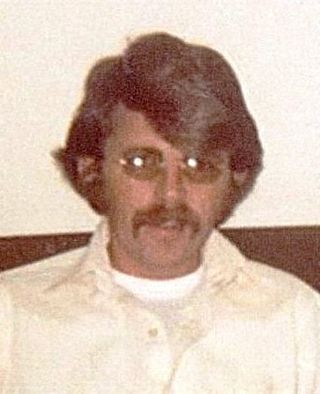
Leslie Isben Rogge is an American criminal and bank robber. He became the first criminal in the FBI's Ten Most Wanted to be caught due to the Internet.
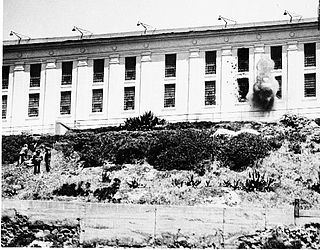
The Battle of Alcatraz, which lasted from May 2 to 4, 1946, was the result of an escape attempt at Alcatraz Federal Penitentiary by armed convicts. Two Federal Bureau of Prisons officers—William A. Miller and Harold Stites—were killed along with three of the perpetrators. Fourteen other officers and one uninvolved convict were also injured. Two of the perpetrators were executed in 1948 for their roles.
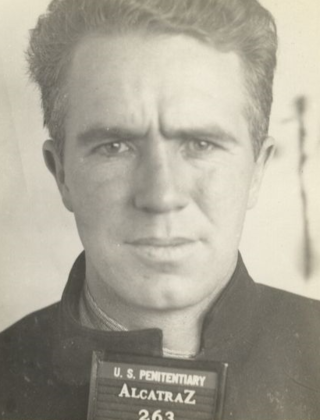
Thomas Robert Limerick was an American criminal, who took part in the third documented escape attempt from Alcatraz Island on the night of May 23, 1938.

Joseph Paul "Dutch" Cretzer was an American bank robber and prisoner at Alcatraz who participated in and was slain in the bloody "Battle of Alcatraz" which took place following a failed escape attempt between May 2 and May 4, 1946.

Arthur R. "Doc" Barker was an American criminal, the son of Ma Barker and a member of the Barker-Karpis gang, founded by his brother Fred Barker and Alvin Karpis. Barker was typically called on for violent action, while Fred and Karpis planned the gang's crimes. He was arrested and convicted of kidnapping in 1935. Sent to Alcatraz Federal Penitentiary in 1936, he was killed three years later while attempting to escape.
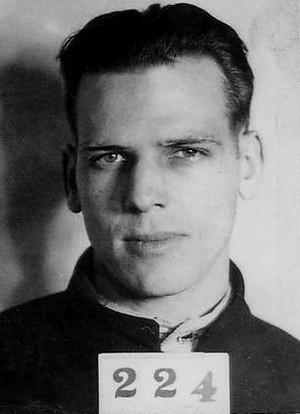
James Crittenton Lucas was an American criminal who served a life sentence in Alcatraz. He is best known for being part of an attempted escape from Alcatraz Penitentiary in 1938, and for attacking Al Capone in the prison's laundry room on June 23, 1936.

John Paul Chase was an American bank robber and Depression-era outlaw. He was a longtime criminal associate of the Karpis-Barker Gang and most notably Baby Face Nelson who later brought him into the John Dillinger gang. FBI Director J. Edgar Hoover once referred to Chase as "a rat with a patriotic-sounding name". Chase and Nelson continued to rob banks with John Dillinger until Dillinger's death in July 1934. After the death of Nelson in November 1934, Chase fled back to California where he was arrested a month later on December 27, 1934. Chase was sent to Alcatraz where he became one of the longest-serving inmates;.

Edward Wilhelm Bentz was an American bank robber and Depression-era outlaw. He was associated with several high-profile public enemies during his criminal career, including Harvey Bailey, Albert Bates, George "Machine Gun" Kelly and Baby Face Nelson. He was eventually captured by the FBI and sentenced to Alcatraz.

Russell Lee "Boobie" Clark was an American thief, bank robber and prison escapee. He is best known as the "good natured" member of the John Dillinger gang and participated in armed holdups with them in a three-month crime spree across the Midwestern United States from October 1933 until his capture in January 1934.
Ed Davis was an American burglar, bank robber and Depression-era outlaw. He was particularly active in Oklahoma, referred to by authorities as "The Fox", and frequently teamed with Jim Clark and Frank Sawyer during the early 1930s. Eventually captured in 1934, he was involved in a failed escape attempt from Folsom State Prison, resulting in the deaths of one guard and two inmates, and was executed at San Quentin.

Volney Everett "Curley" Davis was an American bank robber and Great Depression-era outlaw. A longtime Minnesota bandit, he was the boyfriend of Edna Murray and an associate of both the John Dillinger and Alvin Karpis-Barker gangs during the 1930s.
The Holden-Keating Gang was a bank robbing team, led by Thomas James Holden (1896–1953) and Francis Keating, which was active in the Midwestern United States from 1926 to 1932. Holden was described by a spokesman for the FBI as "a menace to every man, woman and child in America" and was the first fugitive to be officially listed on the FBI's Top Ten Most Wanted List in 1950.

John Allen Kendrick was an American criminal, escape artist, bank robber and member of the Tri-State Gang whose career spanned four decades. He was listed on the FBI's Top Ten Most Wanted in late 1955, and was apprehended by the FBI that same year.
The Kimes–Terrill Gang was a prohibition era bank robbing gang, led by Matthew Kimes and Ray Terrill, active in the Midwestern United States during the 1920s. The gang was known, not only for their high-profile robberies, but for their frequent escapes from prison. The members were alleged to have sworn a blood oath to free each other from jail, should they ever be captured, or die in the attempt.
Wilbur Underhill Jr., often called "Mad Dog" or the "Tri-State Terror", was an American criminal, burglar, bank robber and Depression-era outlaw. He was one of the most wanted bandits in Oklahoma during the 1920s and 1930s and co-led a gang with Harvey Bailey that included many fellow Cookson Hills outlaws including Jim Clark, Ed Davis and Robert "Big Bob" Brady.

The Barker–Karpis Gang was one of the longest-lived criminal gangs during the Depression Era, spanning from 1931 to 1935. The gang was founded by Fred Barker and Alvin Karpis, and later joined by Fred's brother Arthur "Doc" Barker. Along with the three core members, the gang's network spanned up to 25 members at one point.
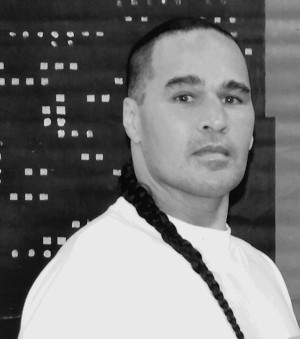
Byron Shane Chubbuck, also known as Robin the Hood or Oso Blanco de Aztlán is a convicted American bank robber and indigenous activist. Starting in 1998, Chubbuck would rob numerous banks until he was captured in August 1999. During his criminal run, he informed bank tellers that the money which he stole would go towards the indigenous Zapatista army in Southern Mexico. After being charged with 13 counts of bank robbery and 1 count of attempted bank robbery, he was imprisoned at Santa Fe County Jail, where he remained until his escape in December 2000.















